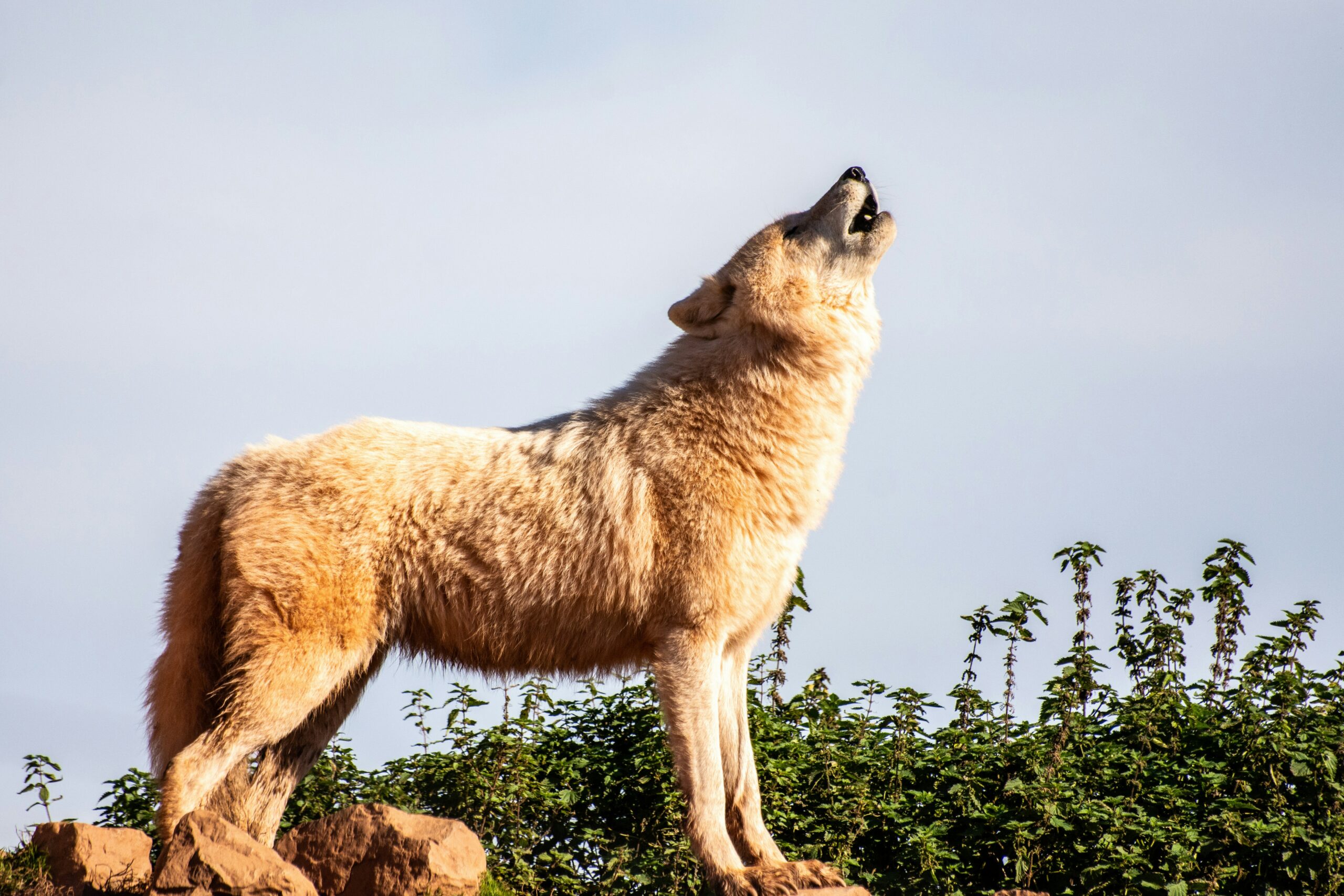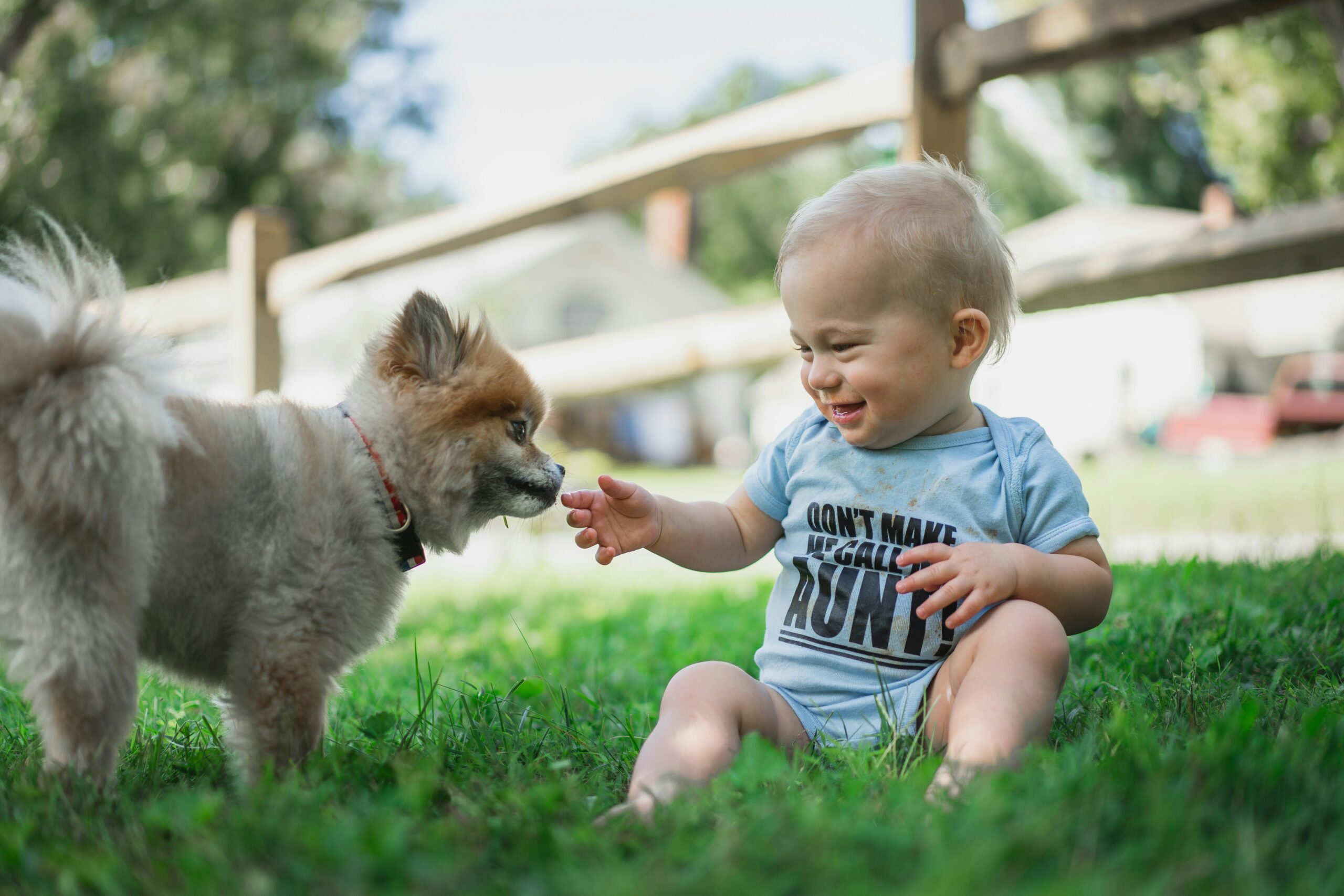Both being canines, dogs and wolves share a lot of the same traits and features – some breeds more than others. For example, you might think a German Shepherd is more wolf-like than an Italian Greyhound or a Pomeranian based purely on looks alone.
Despite the dramatic differences between many dog breeds, they all share the same ancient ancestry – wolves.
All Domestic Dogs Descended from Gray Wolves
The bond between dogs and wolves is deeply etched in human history. Genetic evidence suggests that the early domestic dogs began splitting from their wild wolf counterparts around 15,000 years ago (during the last ice age). Other studies claim the separation began as far back as 40,000 years. At any rate, it was a long, long time ago. While we may never know the exact circumstances behind the separation, or divergence as some call it, many believe it was due to wolves loitering around human settlements where they fed on leftover scraps.
Over time these wolves effectively domesticated themselves and began interacting with humans. It’s from these wolves that ALL domestic dogs have descended. Researchers have been in agreement for quite a while that domestic dogs descended from gray wolves, but a recent study suggests that two different wolf populations were at play.
If All Dogs are Descended from Wolves, Why do Some Look Different?
It’s reasonable to assume that some dog breeds have a closer relationship to wolves because of how they look or act. Northern breeds like the Alaskan Malamute, Siberian Husky, and Utonagan bear a remarkable resemblance to wolves in appearance. But this is actually a result of purpose breeding rather than a genetic link.
Breeds like this were bred for endurance, strength, adaptability in rough climates or terrain, and intelligent independence. All of which are traits that wolves need in spades to survive in the wild. So, it shouldn’t come as a surprise that they end up looking quite similar.
What might come as a surprise, however, is that all dog breeds share a 99.9% genetic similarity with gray wolves. The last 1% (technically less than 1%) is what separates domestic breeds from wolves and from each other.
Breeds With More Wolf DNA
Some breeds share more DNA with wolves than other breeds do, although by extremely minor amounts. In most cases, the older the breed, the greater the likelihood of it being related even more closely.The Siberian husky is almost always at the top of this list, with the breed itself dating back over 4,000 years. Other ancient breeds that carry more wolf DNA are the Shih Tzu, Pekingese, Basenji, Saluki, and Afghan Hound, to name a few. There is plenty of argument over which single breed is the most closely related. While there is no definitive evidence one way or another, some claim it’s the Shih Tzu.
In contrast, some newer breeds like the German shepherd or Czechoslovakian Vlciak are less than 200 years old, yet they have a closer link with wolves. During the creation of both breeds, they used wolves in the original parent group, giving them a closer link to modern wolves. Though they would have technically been wolf-dogs, after extensive breeding they are considered a distinct breed rather than a hybrid.
So, What About Wolf-Dogs?
Simply put, a wolf-dog is the offspring of a domestic dog and a wolf. Breed a Timberwolf with a German Shepherd and the offspring will be considered wolf-dogs instead of a specific breed.
Wolf-dogs are occasionally produced as a means to develop a new distinct breed, to pass along certain desirable traits that couldn’t be found elsewhere. In doing so, they also pass along the complex needs and behaviors of their wolf lineage – none of which are traditionally sought after in a domestic pet.
Wolves are instinctually wary of humans, aggressive toward prey or threats, and in a constant state of fight or flight. Varying degrees of these traits are seen in their hybrid offspring as well. Making it a challenge to keep and train a wolf-dog as a pet, though certainly not impossible, it takes the right handler to understand their needs and provide the appropriate environment. Not to mention all the legal regulations around owning a wolf-dog.
What Does This Mean for Your Loyal Pup?
All in all, this means absolutely nothing for the puppy sleeping in your lap. And at the same time, it means everything.
Understanding where modern dogs came from and how they became man’s best friend is fascinating to say the least, and not fully understood yet either. Further research and discovery will likely paint an even clearer picture.
Fun Fact: Dogs were the first animal to ever be domesticated by humans! Followed by either Sheep or Goats.
In a practical sense, your dog’s wolfish ancestry can manifest in many behaviors, such as a strong pack instinct, tendency to roam, a pre-disposition to howling, or their nature of protecting the weak or sick. Some of these behaviors, like howling, can be trained, but these natural instincts are part of a deep evolutionary history stretching back thousands of years, resulting in the dogs we know and love today.
Does this mean you should be treating your dog any differently? Absolutely not. But the next time you look at your loyal fur baby, remember, they are more deeply connected to us than any other species – and the legacy of the ancient wolf lives on in every bark and wagging tail. So, give them a pet or two, they deserve it!
Photo credit: https://unsplash.com/photos/brown-wolf-standing-boulder-during-daytime-zBU8dMscx4M
Did you find this city dog content helpful? Share it with a friend or link it to social media. Enjoy short clips of silly dogs? Best dog training videos? Holistic puppy training tips? Follow us on instagram @nydognanny or on YouTube at nydognanny. Have some news you needs to get to dog and cat parents stat? Email info@newyorkdognanny.com with your article pitch.



